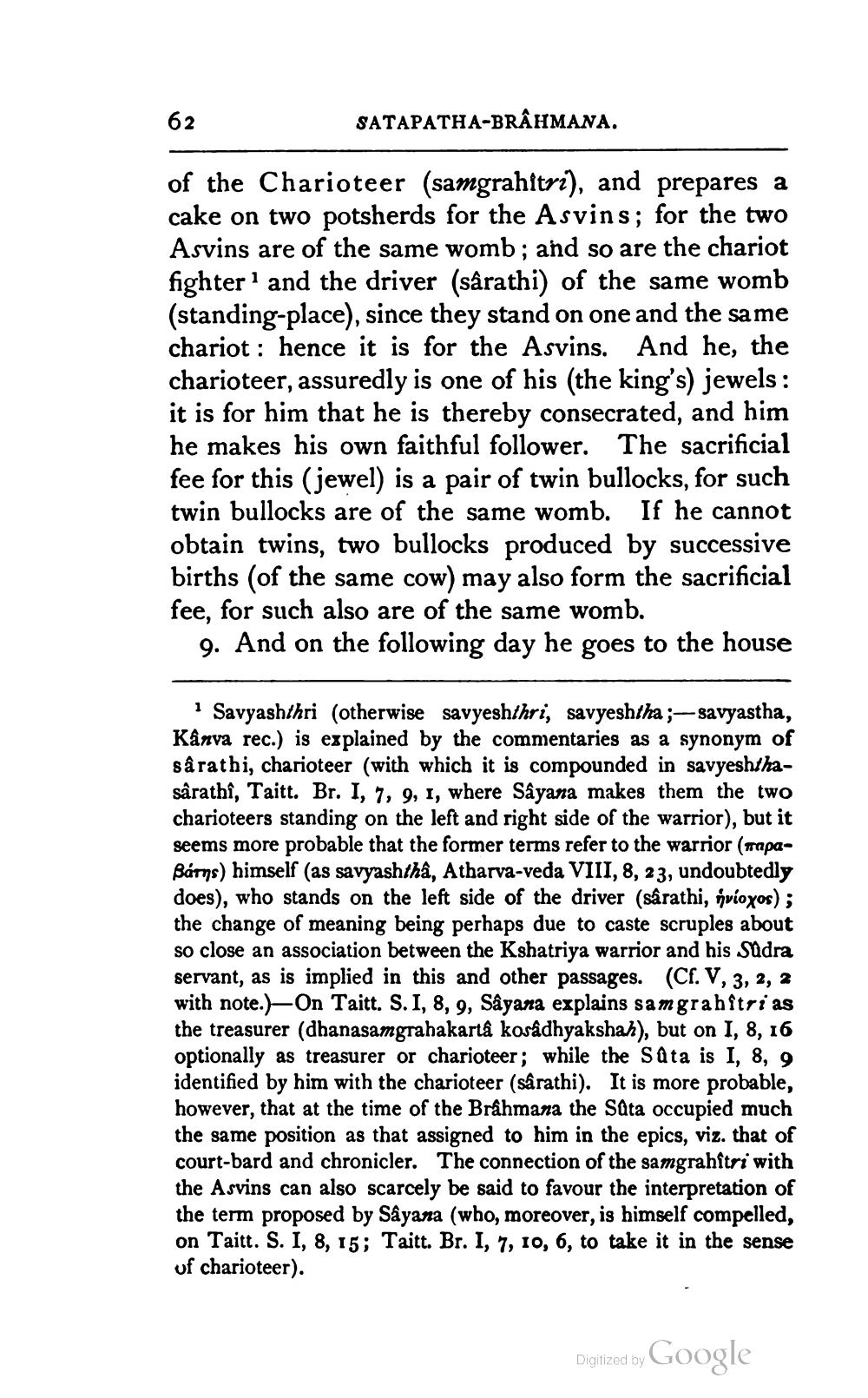________________
62
SATAPATHA-BRAHMANA.
of the Charioteer (samgrahitri), and prepares a cake on two potsherds for the Asvins; for the two Asvins are of the same womb; and so are the chariot fighter and the driver (sârathi) of the same womb (standing-place), since they stand on one and the same chariot : hence it is for the Asvins. And he, the charioteer, assuredly is one of his (the king's) jewels: it is for him that he is thereby consecrated, and him he makes his own faithful follower. The sacrificial fee for this (jewel) is a pair of twin bullocks, for such twin bullocks are of the same womb. If he cannot obtain twins, two bullocks produced by successive births (of the same cow) may also form the sacrificial fee, for such also are of the same womb.
9. And on the following day he goes to the house
Savyashthri (otherwise savyeshthri, savyeshtha ;- savyastha, Kanva rec.) is explained by the commentaries as a synonym of sârathi, charioteer (with which it is compounded in savyeshthasârathî, Taitt. Br. I, 7, 9, I, where Sayana makes them the two charioteers standing on the left and right side of the warrior), but it seems more probable that the former terms refer to the warrior (mapaBarns) himself (as savyashtha, Atharva-veda VIII, 8, 23, undoubtedly does), who stands on the left side of the driver (sârathi, hvíoxos); the change of meaning being perhaps due to caste scruples about so close an association between the Kshatriya warrior and his Sudra servant, as is implied in this and other passages. (Cf. V, 3, 2, 2 with note.)-On Taitt. S. I, 8, 9, Sâyana explains samgrahitrias the treasurer (dhanasamgrahakarta kosádhyakshak), but on I, 8, 16 optionally as treasurer or charioteer; while the Sûta is I, 8, 9 identified by him with the charioteer (sârathi). It is more probable, however, that at the time of the Brâhmana the Sata occupied much the same position as that assigned to him in the epics, viz. that of court-bard and chronicler. The connection of the samgrahitri with the Asvins can also scarcely be said to favour the interpretation of the term proposed by Sayana (who, moreover, is himself compelled, on Taitt. S. I, 8, 15; Taitt. Br. 1, 7, 10, 6, to take it in the sense of charioteer).
Digitized by Google




